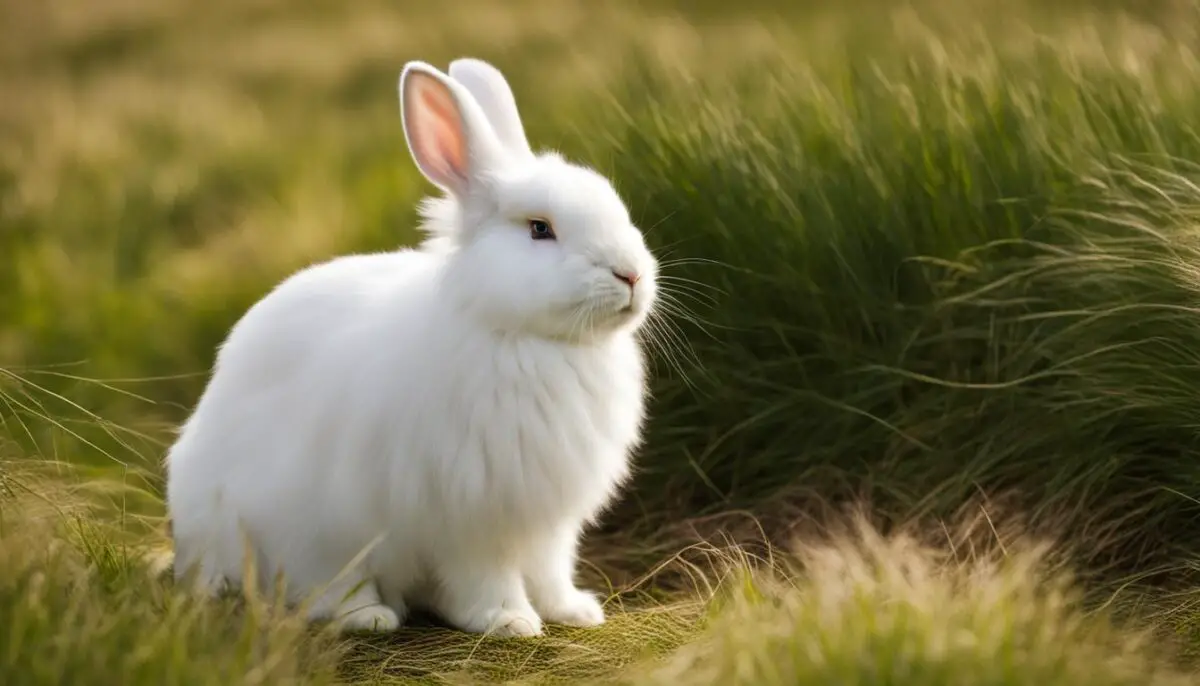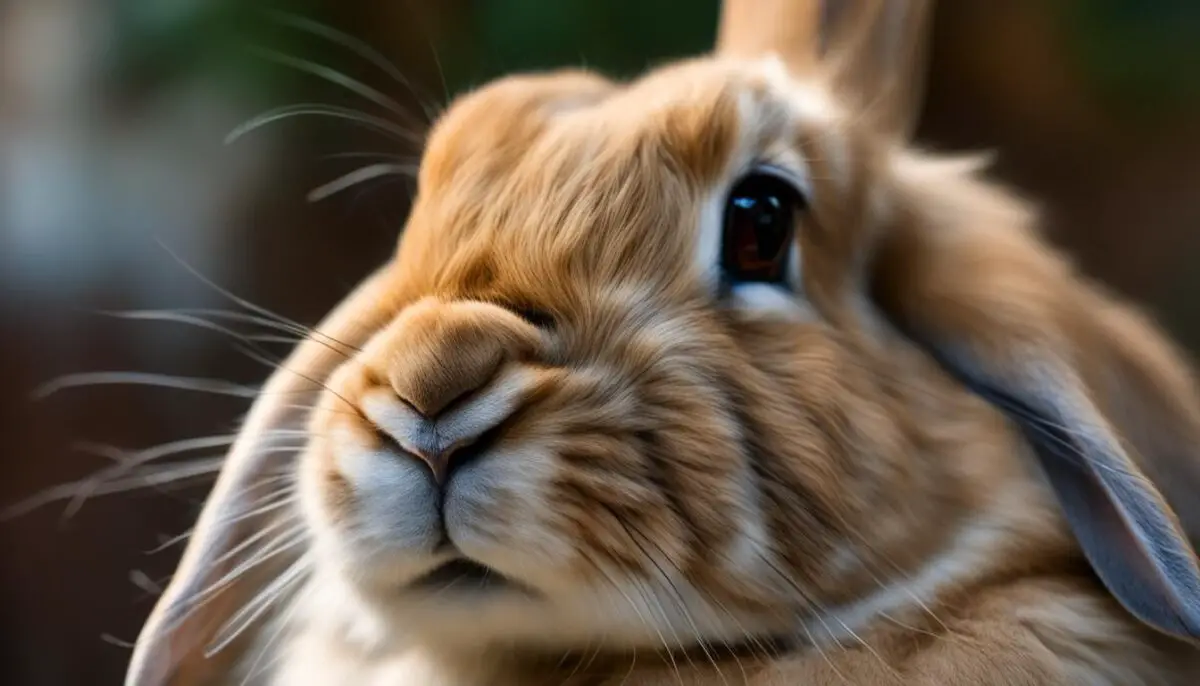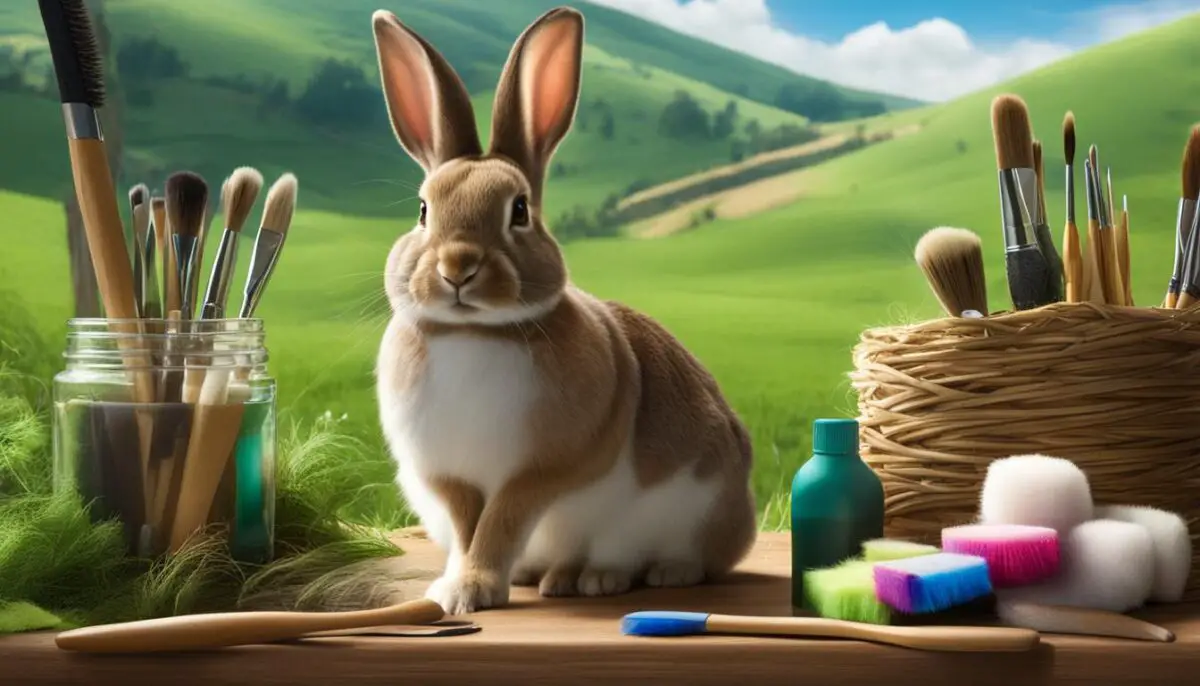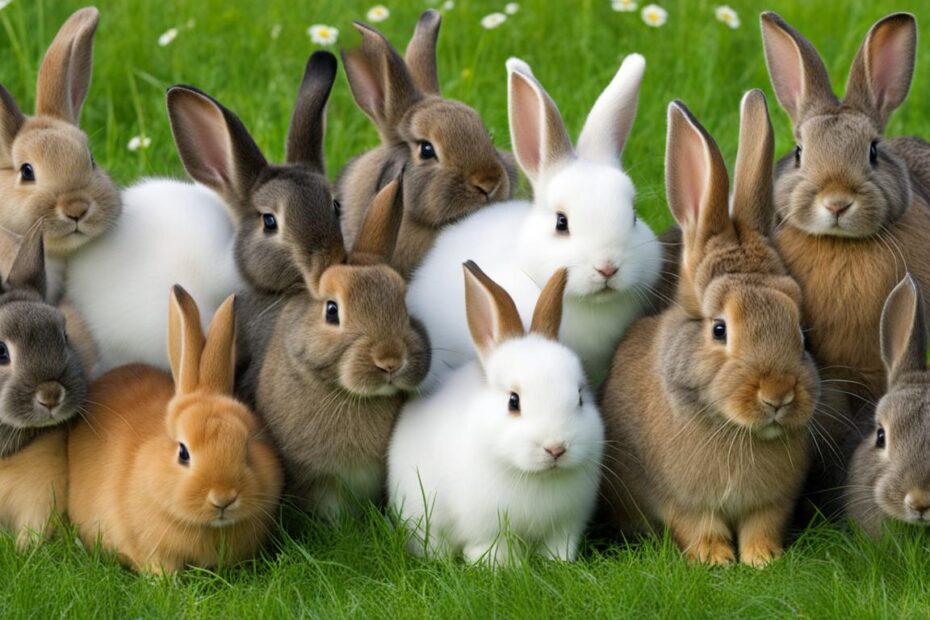Shedding is a common occurrence in rabbits, and the amount of shedding can vary depending on the breed. In this guide, we will explore the different rabbit breeds and their shedding patterns, as well as provide tips on managing and reducing shedding in rabbits.
Key Takeaways:
- Some rabbit breeds shed more than others, and understanding their shedding patterns can help in managing grooming needs.
- It’s important to establish a regular grooming routine and brush your rabbit to remove loose fur and prevent hairballs.
- Providing a healthy diet high in fiber and access to fresh water can help reduce excessive shedding in rabbits.
- No rabbit breed is truly hypoallergenic, but proper grooming practices and maintaining a clean living environment can minimize allergic reactions for allergy sufferers.
- Excessive shedding in rabbits can sometimes lead to health issues, such as digestive system blockages and hairballs, which can be prevented through proper diet and grooming.
Which Rabbits Shed the Most
Rabbit Breeds That Shed the Least
When it comes to shedding, some rabbit breeds are known to shed less than others. These low-shedding breeds include the Angora rabbit, Mini Rex rabbit, Mini and Standard Plush Lop, and Velveteen Lop. These breeds have been specifically bred to have minimal shedding and may be a good option for those who are looking for a rabbit with less fur.
One of the rabbit breeds that shed the least is the Angora rabbit. With its long and robust fur, the Angora rabbit sheds very little due to its specific breeding. However, it is important to note that the Angora rabbit does require regular grooming to keep its long hair in good condition.
The Mini Rex rabbit is another breed known for its minimal shedding. While they may not shed less than other breeds, their short hair makes the grooming process more efficient. This breed is considered to be low maintenance in terms of grooming needs. rabbits with excessive shedding
The Mini and Standard Plush Lop is a breed that is prized for its unique fur and is known to have minimal shedding. This breed may be a good option for those with allergies, although it is important to note that no rabbit is truly hypoallergenic.
Rabbit Breeds That Shed the Least
| Breed | Shedding Level | Grooming Needs |
|---|---|---|
| Angora rabbit | Minimal shedding | Regular grooming required to maintain long hair |
| Mini Rex rabbit | Minimal shedding | Efficient grooming due to short hair |
| Mini and Standard Plush Lop | Minimal shedding | Low grooming needs |
| Velveteen Lop | Minimal shedding | Regular grooming required, especially for ear cleanliness |
The Angora Rabbit: The Breed That Sheds the Least
The Angora rabbit is widely regarded as the breed that sheds the least. Known for its long and robust fur, this breed experiences minimal shedding due to its specific breeding. The Angora rabbit’s fur potential is truly impressive, with some individuals producing up to 12 ounces of wool per year. However, it’s important to note that the Angora rabbit does require regular grooming to keep its long hair in good condition and prevent matting and tangling.
Grooming needs for the Angora rabbit involve a combination of brushing and occasional trimming to maintain the health and appearance of its luxurious coat. Regular brushing not only helps prevent shedding but also removes any loose or tangle-prone fur. Trimming may be necessary to prevent the rabbit’s fur from becoming too long and difficult to manage. It’s crucial to establish a grooming routine early on and ensure that the Angora rabbit feels comfortable and safe during the grooming process.shedding in different rabbit breeds
When grooming an Angora rabbit, it’s essential to use the right tools, such as a slicker brush or a comb with wide-spaced teeth. These tools effectively remove loose fur and help prevent matting. Additionally, providing distractions, treats, and gentle handling can make grooming a positive and enjoyable experience for both the rabbit and the owner.
| Grooming needs for the Angora rabbit | Details |
|---|---|
| Brushing | Regular brushing is necessary to prevent shedding and remove loose fur. |
| Trimming | Occasional trimming may be required to maintain the fur’s manageable length. |
| Tools | Use a slicker brush or a comb with wide-spaced teeth to effectively groom the Angora rabbit. |
| Positive experience | Provide distractions, treats, and gentle handling to make grooming a positive and enjoyable experience for the rabbit. |

In summary, the Angora rabbit is the breed that sheds the least, thanks to its long and robust fur. However, proper grooming is essential to maintain the health and appearance of this breed’s coat. Regular brushing, occasional trimming, and using the right tools and techniques will help keep the Angora rabbit’s fur in excellent condition and minimize shedding.shedding in different rabbit breeds
Mini Rex Rabbit: A Breed with Minimal Shedding
The Mini Rex rabbit is a popular breed known for its minimal shedding. This breed has short hair, which makes grooming more efficient and contributes to its low-maintenance nature. Mini Rex rabbits have a dense, plush coat that sheds less compared to other breeds, making them a great choice for individuals who prefer a rabbit with minimal fur loss.rabbit fur loss
The short hair of the Mini Rex rabbit also means less time spent on grooming. While regular brushing is still recommended to remove any loose fur and maintain a healthy coat, it is not as time-consuming as grooming longer-haired breeds. This makes the Mini Rex rabbit an ideal option for individuals who have a busy lifestyle or limited time for grooming.excessive hair loss in rabbits
Despite their minimal shedding, it’s important to provide proper care for Mini Rex rabbits. This includes ensuring they have a well-balanced diet, access to fresh water, and regular veterinary check-ups. By meeting their basic needs and understanding their grooming requirements, you can enjoy the benefits of having a low-maintenance and adorable Mini Rex rabbit as a furry companion.
| Advantages of Mini Rex Rabbits | Considerations for Mini Rex Rabbits |
|---|---|
|
|
The Mini Rex rabbit is an excellent choice for individuals who desire a rabbit with minimal shedding and a short, plush coat. With efficient grooming needs and low maintenance, this breed is a popular option among rabbit enthusiasts.
Mini and Standard Plush Lop: Low-Shedding and Suitable for Allergy Sufferers
If you’re looking for a rabbit breed that sheds minimally and is suitable for allergy sufferers, the Mini and Standard Plush Lop might be the perfect choice for you. These adorable bunnies have a reputation for their low shedding and are often considered a hypoallergenic option.managing rabbit grooming
Although no rabbit is truly hypoallergenic, the Mini and Standard Plush Lop breed produces fewer allergenic proteins that are known to trigger allergic reactions in some individuals. This makes them a better option for those with allergies compared to other rabbit breeds.
It’s important to note that individual sensitivities to allergens can vary, so it’s always recommended to spend time with a Mini or Standard Plush Lop before making a final decision. This will allow you to assess your own personal tolerance to their dander and determine if they are a suitable match for your allergies.
| Characteristics | Mini Plush Lop | Standard Plush Lop |
|---|---|---|
| Fur Length | Medium | Medium to Long |
| Grooming Needs | Regular brushing to prevent matting | Regular brushing and occasional trims to maintain fur length |
| Temperament | Gentle, friendly, and social | Gentle, friendly, and social |
The Mini and Standard Plush Lop rabbits have a medium to long fur length, which requires regular grooming to prevent matting and keep their coat in good condition. They have a gentle and friendly temperament, making them suitable for families and individuals alike. rabbit shedding patterns
If you’re considering adding a rabbit to your family but are concerned about allergies or excessive shedding, the Mini and Standard Plush Lop breed could be the ideal choice. Not only do they shed less than other breeds, but they also have a charming personality that will bring joy to your household.
The Velveteen Lop: A Mix Breed with Soft Fur and Low Shedding
The Velveteen Lop is a mix breed of rabbit that is known for its soft and dense fur. This breed sheds less compared to other rabbit breeds, making it a popular choice for those who prefer a rabbit with low shedding. The soft fur of the Velveteen Lop not only feels pleasant to touch but also requires less maintenance in terms of grooming needs.
However, it is important to note that despite their low shedding, the Velveteen Lop does require regular grooming to maintain their fur’s cleanliness and overall health. Due to their long lop ears, these rabbits are prone to accumulating dirt and debris. Therefore, it is necessary to clean their ears regularly to minimize the risk of infection.
| Grooming Needs | Ear Cleanliness |
|---|---|
| The Velveteen Lop requires regular brushing to remove loose fur and prevent matting. This helps keep their fur in good condition and reduces shedding. | Due to their long lop ears, the Velveteen Lop requires regular ear cleaning to remove dirt and debris. This helps prevent infections and keeps their ears healthy. |
| The Velveteen Lop’s grooming needs can be easily met by establishing a regular brushing routine, ensuring the removal of loose fur and preventing hairballs. | Regular ear cleaning should be done using a gentle cleanser recommended by a veterinarian to maintain ear cleanliness and minimize the risk of infection. |
| It is recommended to brush the Velveteen Lop at least twice a week, increasing to daily during shedding seasons, to maintain their fur’s cleanliness and manage shedding. | Ear cleaning should be done once a week or as recommended by a veterinarian to ensure proper ear hygiene and prevent the buildup of dirt and bacteria. |
In conclusion, the Velveteen Lop is a mix breed of rabbit that offers soft fur and low shedding. With the right grooming routine and regular ear cleaning, this breed can thrive and provide companionship with minimal fur-related maintenance.

Understanding Rabbit Shedding Patterns
Rabbits have specific shedding patterns that are closely tied to the changing seasons. Understanding these patterns can help rabbit owners effectively manage their pet’s shedding needs. Let’s take a closer look at the different shedding patterns rabbits go through.shedding tips for rabbits
Seasonal Shedding
Rabbits typically experience two major sheddings per year, known as molting. These sheddings occur when rabbits transition between their winter and summer coats. In the spring, rabbits shed their thick winter fur in preparation for the warmer weather. This shedding helps them stay cool during the hot months.
During the fall, rabbits shed their summer coats to make way for thicker fur that will keep them warm during the winter. This shedding is an adaptation to the changing temperatures and is a natural process for rabbits.
Managing Rabbit Shedding
While shedding is a normal part of a rabbit’s life, there are steps you can take to manage it effectively. Regular grooming is essential to remove loose fur and prevent hairballs. Brushing your rabbit at least twice a week, and increasing the frequency during shedding seasons, can help keep their fur in good condition.
Additionally, providing your rabbit with a healthy diet that is high in fiber can promote healthy digestion and reduce excessive shedding. Make sure your rabbit has access to fresh water at all times to stay hydrated and support overall coat health.
| Season | Shedding Pattern |
|---|---|
| Spring | Shedding of winter coat, preparing for warmer weather |
| Fall | Shedding of summer coat, growing thicker fur for winter |
Understanding your rabbit’s shedding patterns and taking appropriate measures can help keep their coat healthy and minimize potential health issues. By following a regular grooming routine and providing a balanced diet, you can ensure that your rabbit’s shedding process is both manageable and beneficial for their overall well-being.

By following these tips for managing rabbit shedding, you can help keep your rabbit’s fur in good condition and minimize the amount of fur that is shed. Regular grooming, a healthy diet, and a clean living environment are the key factors in reducing shedding in rabbits and promoting their overall wellbeing.
Common Misconceptions about Rabbit Shedding
When it comes to rabbit shedding, there are several common misconceptions that many people believe. It’s important to debunk these myths and have a clear understanding of the facts in order to properly care for your rabbit and manage any potential allergies or shedding concerns.
“Rabbits with fur allergies are hypoallergenic pets.”
One of the most widely believed misconceptions is that rabbits with fur allergies are hypoallergenic pets. However, this is not entirely true. It’s important to note that it’s not the fur itself that causes allergic reactions, but rather the proteins that cling onto the fur. These proteins can trigger immune responses in individuals with allergies, causing symptoms such as sneezing, watery eyes, and respiratory issues.
While some rabbit breeds may produce fewer allergenic proteins, no rabbit can be truly hypoallergenic. It’s essential for individuals with allergies to take appropriate measures to minimize their exposure to these allergens, such as regular grooming, maintaining a clean living environment, and consulting with a healthcare professional for personalized advice.
Allergy-Friendly Rabbit Breeds
- Angora Rabbit
- Mini Rex Rabbit
- Mini and Standard Plush Lop
- Velveteen Lop
While these breeds are known to have minimal shedding and may be more suitable for individuals with allergies, it’s important to keep in mind that every person’s allergies are unique. It’s recommended to spend time with the specific breed you are interested in to gauge your individual reaction before making a decision.
| Breed | Shedding | Hypoallergenic |
|---|---|---|
| Angora Rabbit | Least shedding breed | No |
| Mini Rex Rabbit | Minimal shedding breed | No |
| Mini and Standard Plush Lop | Low shedding breed | No |
| Velveteen Lop | Low shedding breed | No |
Understanding the misconceptions surrounding rabbit shedding is essential for responsible rabbit ownership. By knowing the facts and taking proper precautions, you can provide a healthy and comfortable living environment for both you and your furry friend.
Potential Health Issues Related to Excessive Shedding
Excessive shedding in rabbits can pose potential health issues that owners should be aware of. One of the common problems associated with excessive shedding is the risk of digestive system blockage. When rabbits groom themselves, they ingest fur, which can accumulate in their digestive tract and form hairballs. If hairballs are not properly eliminated, they can obstruct the digestive system, leading to discomfort, loss of appetite, and even life-threatening conditions such as gastrointestinal stasis.
To prevent digestive blockages, it is crucial to establish a regular grooming routine for your rabbit. This includes brushing your rabbit’s fur to remove loose or dead hair, which reduces the amount of fur they ingest during grooming. By regularly removing excess fur, you can help minimize the risk of hairballs and maintain your rabbit’s digestive health.
In addition to digestive system blockages, excessive shedding can also contribute to the formation of hair matts. These are tangled clumps of fur that can form in areas where shedding fur is not effectively removed or groomed. Hair matts can be uncomfortable for rabbits and may lead to skin irritation, skin infections, or even injuries if left untreated.
A proper diet can also play a role in managing excessive shedding. Providing your rabbit with a high-fiber diet can help promote healthy digestion and prevent hairball formation. Additionally, ensuring your rabbit has access to fresh water is important for maintaining overall hydration and aiding in the elimination of fur.
Table: Common Health Issues Related to Excessive Shedding in Rabbits
| Health Issue | Description |
|---|---|
| Digestive System Blockage | Excessive shedding can lead to the formation of hairballs, which can obstruct the digestive system and cause gastrointestinal problems. |
| Hair Matts | Excessive shedding can result in tangled clumps of fur known as hair matts, which can cause discomfort, skin irritation, and potential infections. |
“Regular grooming, a high-fiber diet, and access to fresh water are key factors in managing excessive shedding and preventing potential health issues in rabbits.” – Rabbits Unlimited Magazine
By addressing excessive shedding through proper grooming, diet, and access to fresh water, you can help minimize the risk of health issues in your rabbit. Regular brushing and hair removal can prevent digestive blockages and hair matt formation, promoting your rabbit’s overall well-being and comfort. Remember to consult with a veterinarian if you have any concerns about your rabbit’s shedding or overall health.
The Impact of Rabbit Shedding on Allergy Sufferers
Allergy sufferers may experience challenges when it comes to owning a pet rabbit due to the shedding of fur. While no rabbit breed is truly hypoallergenic, there are steps that can be taken to minimize allergic reactions and enjoy the companionship of these furry creatures.
It is important to note that it is not the fur itself that causes allergic reactions but the proteins that cling onto the fur. These proteins can trigger immune responses in sensitive individuals, leading to symptoms such as sneezing, itching, and watery eyes. By understanding this mechanism, allergy sufferers can take proactive measures to minimize exposure and manage their allergies effectively.
To minimize allergic reactions, regular grooming is essential. Brushing your rabbit’s fur at least twice a week can help remove loose hair and allergens, reducing the risk of allergic reactions. It is advisable to groom your rabbit in a well-ventilated area or outdoors to prevent allergens from becoming airborne and causing discomfort.
“Regular grooming is essential to minimize shedding and potential allergy triggers. By brushing your rabbit’s fur, you can keep the fur clean and reduce the presence of allergenic proteins.” – Dr. Emily Thompson, Veterinarian
In addition to grooming, maintaining a clean living environment is crucial. Regularly vacuuming and dusting can help eliminate allergens, and using air purifiers can further improve indoor air quality. It is also important to wash your hands after handling your rabbit and avoid touching your face to minimize exposure to allergens.
Consulting with an allergist can provide further guidance on managing allergies and determining whether owning a pet rabbit is a viable option. By taking these proactive measures, allergy sufferers can reduce the risk of experiencing allergic reactions and enjoy the companionship of their beloved rabbits.
Conclusion
To effectively manage shedding in rabbits, it is crucial to understand the shedding patterns of different rabbit breeds and implement proper grooming practices. Regular brushing is essential to remove loose fur and prevent hairballs, especially during shedding seasons. Additionally, providing a healthy diet high in fiber and ensuring access to fresh water can contribute to reducing excessive shedding.
While some rabbit breeds, such as the Angora rabbit, Mini Rex rabbit, Mini and Standard Plush Lop, and Velveteen Lop, are known for shedding less than others, it is important to note that no rabbit is truly hypoallergenic. Proteins that cling onto the fur, not the fur itself, are responsible for allergic reactions. By following proper grooming practices and maintaining a clean living environment, allergy sufferers can minimize the risk of experiencing allergic reactions.
In conclusion, by implementing the tips and techniques mentioned in this rabbit shedding guide, rabbit owners can effectively manage and reduce shedding in their furry companions. Regular brushing, a healthy diet, and maintaining a clean living environment are key to keeping your rabbit’s fur in good condition and minimizing potential health issues. By understanding and meeting the grooming needs of your rabbit, you can ensure a happy and healthy life for your beloved pet.
FAQ
Which rabbit breeds shed the least?
The Angora rabbit, Mini Rex rabbit, Mini and Standard Plush Lop, and Velveteen Lop are known to have minimal shedding.
How often do rabbits shed their fur?
Rabbits usually experience two major sheddings per year, when they shed their winter and summer coats.
How can I manage and reduce shedding in my rabbit?
Establish a regular grooming routine, brush your rabbit at least twice a week (increasing to daily during shedding seasons), provide a healthy diet high in fiber, and ensure access to fresh water.
Are there hypoallergenic rabbit breeds?
No rabbit breed is truly hypoallergenic, but some breeds may cause fewer allergic reactions due to their minimal shedding.
What are the potential health issues related to excessive shedding in rabbits?
Excessive shedding can lead to digestive system blockages and hairballs if not managed properly.
Can rabbits with fur allergies be kept as pets?
While no rabbit is hypoallergenic, individuals with fur allergies can take steps to minimize allergic reactions by following proper grooming practices and maintaining a clean living environment.


